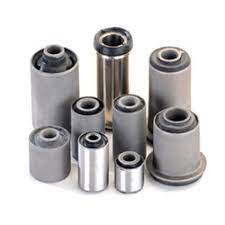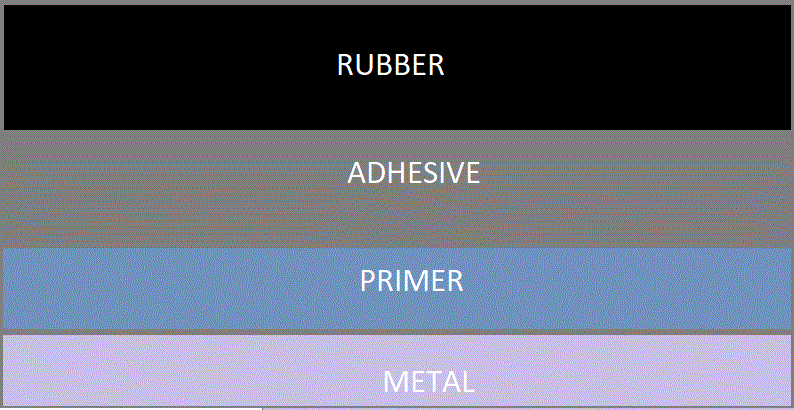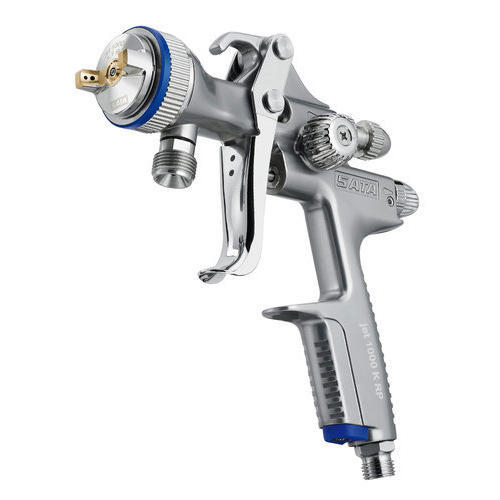Bond Failure
- Post On11.03.2021
- ByNiket Lachake
Types of Bond Failure

A rubber to metal bonded item can be thought of as a "chain" that connects rubber and metal. The strength of any chain is determined by its weakest link. As a result, when a rubber to metal part breaks, it will fail in the part's weakest point. ASTM D429-2002 [21] is a test method that specifically includes rubber-to-metal adhesion. The great majority of bond failures can be traced back to one or more of the ASTM classifications listed below:
- R2R - Rubber to Rubber failure: a failure in the rubber's body.
- Failure at the rubber-to-cement (adhesive) interface is referred to as RC - Rubber/Cement failure.
- Failure at the cement (adhesive) to primer interface is referred to as CP - Cement/Primer failure.
- Failure at the primer-to-metal interface is referred to as CM (cement/metal failure). This is failure at the adhesive-to-metal interface in one coat adhesives.

Rubber to Rubber:
The type of failure to aim for is rubber failure (R). It signifies that the rubber has failed due to cohesive failure. This signifies that the bond between the rubber and the adhesive is stronger than the rubber's tear strength.Rubber to Adhesive:
Failures of rubber/cement (RC) suggest that the weakest spot in the bonded section is at the interface of the rubber and adhesive. These failures are distinguished by a relatively glossy and firm bonded surface that contains little or no rubber. Common causes of RC failure include incorrect adhesive selection, insufficient adhesive dry film thickness, failure to properly agitate the adhesive prior to application, pre-cure of adhesive caused by excessive dwell time in the mould cavity before introducing rubber, low mould pressure, undercure of the part, migration of plasticisers and other ingredients from the body of the rubber to the rubber/adhesive interface, and contamination.Rubber to Primer:
Failures of cement/metal (CM) contacts usually signal a fault with metal preparation or adhesive application. They are distinguished by the appearance of bare metal in the part's bonded area. Poor metal preparation, i.e., the presence of contamination on the metal prior to adhesive application, insufficient dry film thickness of primer, failure to properly agitate the adhesive to achieve a uniform dispersion prior to application, environmental attack (salt, water) on the primer/metal adequately wet out the metal surface), or sweepage (when the flow of rubber strips some or all of the adhesive or primer film from the metal) are all common causes of CM failure.Adhesive to Primer:
The emergence of the primer on the bonded surface characterizes cement/primer (CP) failures. Typically, the adhesive and primer are different colors to make it simpler to distinguish between the two coats. CP failure is typically caused by contamination of the primer surface prior to adhesive application, migration of plasticiser from the rubber into the adhesive/primer interface, insufficient drying of the primer layer prior to adhesive application, or incompatibility between primer and adhesive. Sweepage (when the flow of rubber strips some or all of the adhesive or primer film from the metal surface) of the primer and adhesive off the metal during injection or transfer moulding, interface, dry spray of primer on to the metal (which does not allow the primer to adequately wet out the metal surface).

The emergence of the primer on the bonded surface characterizes cement/primer (CP) failures. Typically, the adhesive and primer are different colors to make it simpler to distinguish between the two coats. CP failure is typically caused by contamination of the primer surface prior to adhesive application, migration of plasticiser from the rubber into the adhesive/primer interface, insufficient drying of the primer film prior to adhesive application, or incompatibility of the primer and adhesive.
